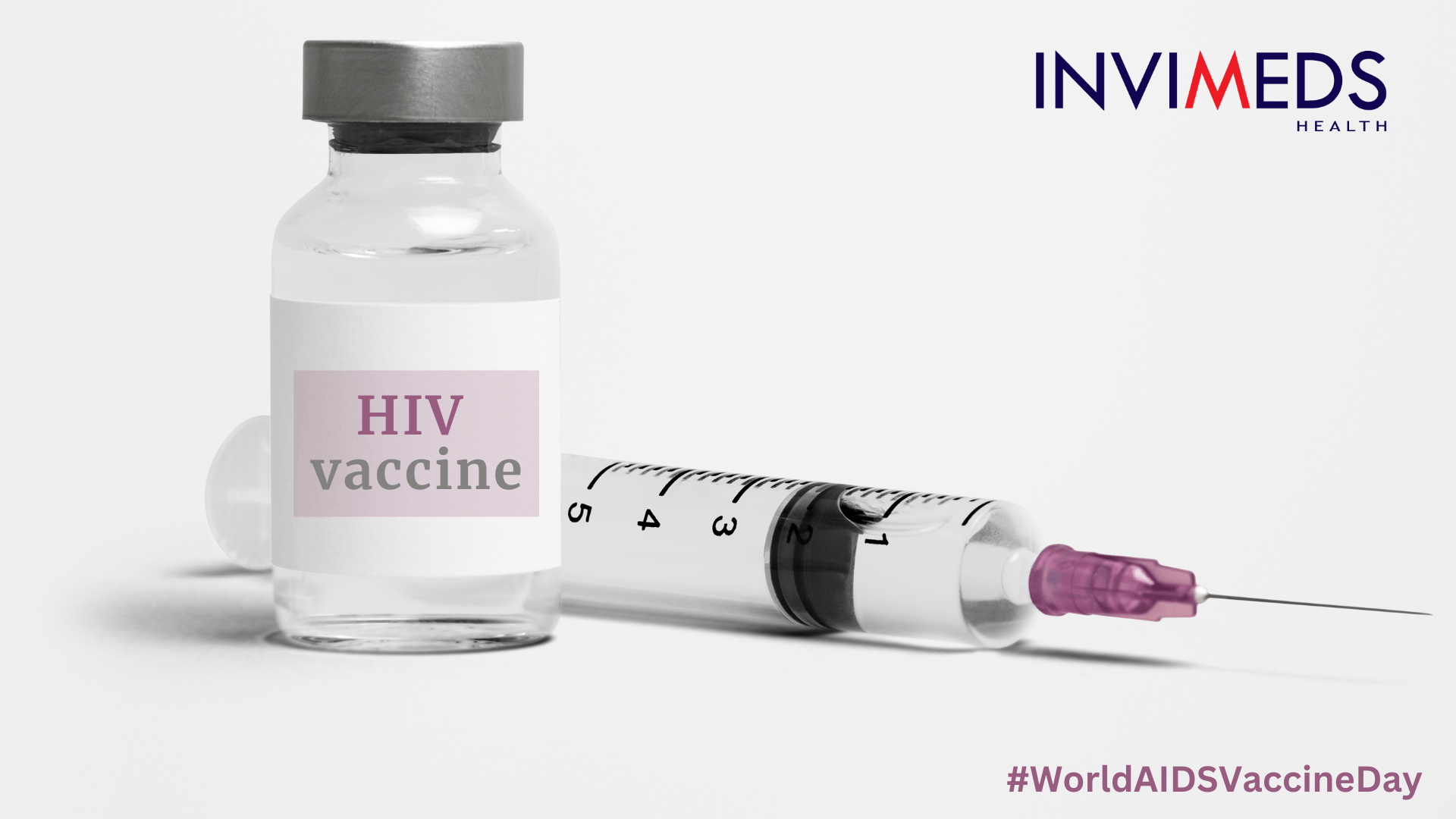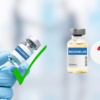World AIDS Vaccine Day, celebrated each year on May 18th, marks a significant moment in the ongoing fight against HIV/AIDS. It serves as a poignant reminder of the urgent need for a safe and effective vaccine to combat this global health crisis. Despite remarkable progress in treatment and prevention, HIV/AIDS continues to pose a formidable challenge, underscoring the importance of sustained research and development efforts in the quest for an AIDS vaccine.
The Origins and Significance of World AIDS Vaccine Day
World AIDS Vaccine Day traces its origins back to May 18, 1997, when then-U.S. President Bill Clinton delivered a seminal commencement speech at Morgan State University. In that address, he issued a challenge to develop an effective HIV vaccine within the subsequent decade, emphasizing the critical role such a vaccine would play in combating the AIDS epidemic. To honor the anniversary of Clinton’s speech, the inaugural World AIDS Vaccine Day was observed on May 18, 1998, and has since become an annual tradition.
Every year on May 18th, advocates for HIV vaccine research use this occasion to emphasize the ongoing need for a vaccine to prevent HIV infection and AIDS. They express gratitude to the numerous volunteers, healthcare professionals, scientists, and supporters who contribute to the quest for a safe and effective AIDS vaccine. Across the globe, communities engage in various activities to raise awareness about AIDS vaccines, educate the public on HIV prevention and research, and highlight ways for individuals to participate in the global effort to combat the HIV/AIDS pandemic.
World AIDS Vaccine Day serves as a poignant reminder of the importance of investing in new technologies as part of a comprehensive response to the HIV/AIDS crisis, urging the international community to prioritize research and development in the fight against this devastating disease.
Understanding AIDS and HIV:
AIDS, the advanced stage of HIV infection, is caused by HIV, which weakens the body’s immune system. HIV targets white blood cells, making individuals more prone to infections and diseases like tuberculosis and certain cancers. Without treatment, HIV can progress to AIDS, typically after many years.
WHO defines Advanced HIV Disease (AHD) as having a CD4 cell count below 200 cells/mm3 or meeting specific stage criteria. Those with AIDS face a high risk of opportunistic infections uncommon in those with healthy immune systems, leading to symptoms such as lung and intestinal infections, fever, weight loss, and neurological issues.
Contrasting AIDS Prevalence: India vs. Global Perspective
In India, approximately 2.4 million people were living with HIV in 2021, with an adult prevalence of 0.2%. The country recorded 63,000 new HIV infections and 42,000 AIDS-related deaths. The epidemic is concentrated in specific states like Andhra Pradesh, Maharashtra, Karnataka, and Tamil Nadu, with vulnerable populations including sex workers, injecting drug users, and men who have sex with men.
Meanwhile, globally, there were 66,000 new HIV infections in India in 2022, with an incidence rate of 0.05 new infections per 1000 people. The worldwide HIV/AIDS epidemic affects around 37.7 million people, with sub-Saharan Africa being the most affected region. Despite challenges, efforts to combat HIV/AIDS have led to progress in the prevention, treatment, and reducing new infections globally and in India.
Understanding HIV Transmission
AIDS (Acquired Immunodeficiency Syndrome) does not propagate like typical pathogens; rather, it marks the advanced stage of HIV (Human Immunodeficiency Virus) infection. HIV transmission occurs through specific interactions involving contact with bodily fluids containing a detectable viral load from an individual with HIV. These fluids encompass blood, semen, vaginal secretions, rectal fluids, and breast milk. The principal avenues for HIV transmission comprise:
- Unprotected sexual intercourse, particularly vaginal or anal, with an HIV-positive individual.
- Sharing injection drug paraphernalia, such as needles or syringes, with an infected person.
- Vertical transmission from mother to child during pregnancy, childbirth, or breastfeeding.
- Occupational exposure, notably needlestick injuries, predominantly affects healthcare workers.
Crucially, HIV is not disseminated through casual interactions like saliva, sweat, spitting, sneezing, or coughing. Furthermore, activities such as hugging, kissing, sharing meals or beverages, or utilizing communal facilities like restrooms do not facilitate HIV transmission. Acquiring a comprehensive understanding of the precise mechanisms of HIV transmission is pivotal in formulating effective preventive strategies and mitigating the virus’s proliferation.
Understanding HIV Progression: Incubation Period and AIDS Onset
Incubation Period of AIDS: Spans 9 months to over 20 years, with no symptoms despite active virus replication.
Onset of AIDS Disease vs. Symptoms: Marks appearance of specific symptoms and infections indicative of severe immune suppression.
Primary Seroconversion Illness: Follows HIV infection, presenting flu-like symptoms lasting weeks.
Window Period: HIV antibodies not detectable, posing transmission risk despite absence of symptoms.
Symptoms of AIDS:
- Opportunistic Infections: AIDS patients are prone to opportunistic infections like pneumonia, tuberculosis, and candidiasis due to their weakened immune systems.
- Weight Loss: Rapid weight loss is a hallmark of AIDS progression, reflecting the body’s inability to fight infections.
- Fever and Night Sweats: Recurring fever and profuse night sweats indicate the body’s struggle against infections and inflammation.
- Fatigue: Extreme tiredness is prevalent in AIDS patients, reflecting the virus’s impact on energy levels and overall health.
- Neurological Disorders: Memory loss, depression, and other neurologic disorders may occur as the virus affects the central nervous system.
- Skin Manifestations: Skin issues like sores, rashes, and unusual discoloration often indicate underlying infections or immune dysfunction.
- Gastrointestinal Symptoms: Diarrhea, mouth sores, and swallowing problems affect the digestive system and nutrient absorption in AIDS patients.
Diagnosis of AIDS:
- HIV Testing: Diagnosis of AIDS begins with HIV testing, which can detect the presence of the virus in the body through blood tests.
- CD4 Cell Count: Monitoring CD4 cell count is pivotal in AIDS diagnosis. A significant drop in CD4 cells indicates a weakened immune system, characteristic of AIDS progression.
- Opportunistic Infection Screening: Screening for opportunistic infections is essential. These infections are common in AIDS patients due to their compromised immune system.
- Viral Load Testing: Viral load testing measures the amount of HIV in the blood, providing insights into disease progression and treatment efficacy.
Exploring HIV Genetic Diversity and Transmission Dynamics
- Recombination of HIV-1M Subtypes: Recombination among different HIV-1M subtypes significantly contributes to genetic diversity, with certain genome regions being more frequently transferred during past events.
- Distribution of Recombinant Forms: Circulating recombinant forms (CRFs) and unique recombinant forms (URFs) from various HIV-1M subtypes exhibit differences in the distribution of genome fragments, indicating distinct genetic lineages.
- Multiploid Inheritance: Multiploid inheritance, involving the simultaneous inheritance of multiple viral genomes during cell-to-cell HIV-1 infection, appears to be common.
- Heritability of HIV Acquisition: Genome-wide association studies suggest that HIV-1 acquisition is polygenic and heritable, with multiple genetic factors influencing its variance.
While information on HIV’s inheritance pattern remains elusive, these findings underscore the intricate nature of HIV genetics and its transmission dynamics. The recombination of viral subtypes and the polygenic nature of HIV acquisition highlight the diverse facets of HIV transmission and genetic variability. Further research is warranted to elucidate the specific inheritance patterns of HIV.
Different Types Of HIV Vaccines
Various types of HIV vaccines are currently in development, each employing distinct mechanisms to stimulate the immune system and prevent HIV infection:
- Live Attenuated Vaccines: While demonstrating promising protection in animal studies, live attenuated vaccines are not progressing for human use due to safety concerns.
- Subunit Vaccines: These vaccines contain small proteins or fragments of the virus, prompting the immune system to generate antibodies against the pathogen. The AIDSVAX gp120 vaccine, a subunit vaccine, failed to protect in efficacy trials, prompting the exploration of more effective vaccine strategies.
- DNA Vaccines: Utilizing copies of single or multiple genes from HIV, DNA vaccines integrate with human genes to produce proteins that trigger an immune response. Many ongoing AIDS vaccine candidates fall under this category, marking DNA vaccines as a prevalent approach in HIV vaccine development.
- Recombinant Vector Vaccines: These vaccines employ harmless or weakened viruses or bacteria, known as vectors, to carry HIV genes. Vector vaccines aim to elicit a robust immune response, often surpassing the efficacy of DNA vaccines alone. Examples include adeno and adeno-associated viruses, pox viruses like Modified Vaccinia Ankara (MVA), and alphaviruses like Venezuelan Equine Encephalitis (VEE) virus.
These diverse HIV vaccine types are undergoing rigorous testing in clinical trials to evaluate their safety and effectiveness in preventing HIV infection. Each vaccine category presents unique advantages and challenges, and ongoing research endeavors to refine HIV vaccine development strategies, are crucial in combating the global HIV/AIDS pandemic effectively.
Mechanism Of AIDS Vaccine
- Immune Response Activation: Upon administration, an AIDS vaccine prompts the immune system to recognize and respond to specific components of HIV, known as antigens.
- Antibody Production: The vaccine stimulates the production of antibodies that are capable of targeting and neutralizing HIV. These antibodies play a crucial role in marking HIV-infected cells for elimination by the immune system.
- Prevention of HIV Infection: The primary objective of an AIDS vaccine is to shield individuals from HIV infection. By priming the immune system to swiftly identify and combat the virus upon exposure, the vaccine effectively reduces the risk of HIV transmission.
Additional Insights:
- Vaccine Approaches: AIDS vaccines can employ either active or passive vaccination approaches. The active approach triggers the body to generate antibodies against HIV, while the passive approach involves administering preformed antibodies against the virus.
- Broadly Neutralizing Antibodies (bnAbs): Some AIDS vaccines aim to stimulate the production of broadly neutralizing antibodies (bnAbs) capable of neutralizing various HIV strains. These bnAbs play a pivotal role in preventing HIV infection and are a focal point of ongoing vaccine research efforts.
Vaccine Impact on HIV Prevention and Treatment
The impact and statistics of vaccines on HIV prevention and treatment efforts are significant in the global healthcare landscape. Here are key points based on the provided sources:
- Epidemiological Impact of an HIV/AIDS Vaccine:
- A vaccine with 50% efficacy and 10 years duration, supplied to 65% of all adults, could reduce HIV incidence by 25 to 60%, depending on the population coverage.
- Vaccinating medium- and high-risk groups could reduce new infections by 52% and deaths by 21%. A vaccine with 70% efficacy showed a significant decline in new infections.
- Reduction in New Infections and Deaths:
- Targeted vaccination strategies, such as vaccinating medium- and high-risk behavior population groups with a 70% effective vaccine, could reduce new infections by 74%.
- Disease-modifying vaccines were effective in reducing the number of patients receiving antiretroviral therapy (ARV), although not as effective as preventive vaccines.
- Vaccine Efficacy and Impact:
- The study explored different vaccine strategies in terms of impact, number of doses required, and the reduction in new HIV infections. With 80% coverage, vaccinating the general population aged 15-49 had the highest reduction in new infections.
- Disease-modifying vaccines and preventive vaccines showed varying impacts on reducing new HIV infections and deaths, highlighting the importance of vaccination strategies in HIV prevention efforts.
- Global Efforts and Progress:
- The development of an effective HIV vaccine is crucial in ending the global HIV/AIDS pandemic. Progress in vaccine research, including the induction of broadly neutralizing antibody precursors in humans, shows promise for future vaccine strategies against HIV.
In summary, vaccines play a vital role in HIV prevention and treatment efforts, with studies demonstrating the potential impact of vaccination strategies in reducing new HIV infections and deaths. Ongoing research and advancements in vaccine development are essential in the fight against HIV/AIDS and in achieving global health goals.
Comprehensive HIV/AIDS Initiatives in India
India has instituted several major initiatives to combat the HIV/AIDS epidemic, demonstrating a multi-faceted approach to address various aspects of the public health challenge:
- National AIDS Control Programme (NACP): India’s National AIDS Control Programme (NACP) has evolved through five phases since its inception in 1992. Currently in its fifth phase (NACP-V: 2021-2026), the program is geared towards expediting progress toward the goal of eliminating AIDS as a public health threat by 2030.
- Targeted Interventions: The Targeted Intervention (TI) program strategically targets key populations at higher risk of HIV transmission, including sex workers, injecting drug users, men who have sex with men, and transgender individuals. TIs offer a spectrum of services encompassing behavior change communication, sexually transmitted infection (STI) treatment, condom promotion, and fostering supportive environments.
- Care, Support, and Treatment: India ensures universal access to antiretroviral therapy (ART) for all individuals living with HIV. The Vihaan initiative establishes Care and Support Centres nationwide to deliver counseling, facilitate partner HIV testing, connect individuals with governmental schemes, and reintegrate patients who have discontinued treatment.
- Prevention of Parent-to-Child Transmission (PPTCT): Project AHANA prioritizes the scaling up of PPTCT services among pregnant women in high-burden districts. It emphasizes routine HIV screening during antenatal care, capacity building for healthcare providers, and continued support for HIV-positive pregnant women.
- Condom Promotion: The Hindustan Latex Family Planning Promotion Trust (HLFPPT), a public health organization, spearheads the social marketing of subsidized condoms (Deluxe Nirodh and Rakshak) across six states. The initiative focuses on stimulating demand, enhancing availability, and ensuring consistent condom supply, particularly in rural and underserved areas.
- Information, Education, and Communication (IEC): Robust IEC strategies are employed to disseminate knowledge, instill desirable behaviors such as consistent condom use, mobilize societal participation, and capacitate healthcare personnel in effective AIDS communication methodologies.
These initiatives, orchestrated by the National AIDS Control Organisation (NACO) in partnership with state governments, non-governmental organizations (NGOs), and international collaborators, are geared towards arresting new HIV infections, furnishing comprehensive care and support, and mitigating AIDS-related mortality rates throughout India.
Advancing HIV Vaccine Development: Recent Updates and Initiatives
The process of creating a successful AIDS vaccine is intricate, primarily because of the genetic variations among HIV strains, the virus’s capability to evade immune responses, and the absence of innate immunity to HIV. These complexities set HIV vaccine development apart from conventional vaccine approaches.
Despite ongoing challenges, progress in HIV vaccine development persists through innovative approaches and clinical trials. Notable updates include the initiation of enrollment for a Phase 1 trial of the preventive HIV vaccine VIR-1388, which aims to elicit an HIV-specific immune response.
Although recent setbacks have been encountered, HIV vaccine research continues, emphasizing the need for sustained efforts to overcome existing obstacles. Additionally, therapeutic vaccines are being explored for their potential in managing HIV infection post-exposure. Overall, ongoing trials and research initiatives reflect a steadfast commitment to advancing HIV/AIDS combat efforts.
Accessibility and Implementation Challenges of HIV Vaccines in India
In the fight against HIV/AIDS in India, ensuring access to HIV vaccines and overcoming implementation challenges are crucial. India’s involvement in vaccine development is pivotal, and its ‘test and treat’ policy aims to enhance HIV care.
However, conducting vaccine trials requires multi-sectoral cooperation, addressing ethical concerns, and tackling stigma. Access to new prevention tools like PrEP remains limited due to cost barriers. Addressing these issues is essential for advancing HIV prevention and treatment efforts in India.
Market Size Trends of AIDS Vaccines
The HIV vaccine market’s current size and projected growth reflect its significant trajectory in recent years. In 2021, the market was valued at USD 350.01 million, and it is anticipated to reach USD 568.92 million by 2030, with a notable compound annual growth rate (CAGR) of 6.24% from 2023 to 2030. Further estimates indicate that the global HIV vaccines market was around USD 504.36 million in 2023 and is expected to expand to USD 648.93 million by 2028, growing at a CAGR of 5.17%.
Projections for the market size suggest a multimillion-dollar reach by 2029, showcasing an unforeseen CAGR during the period spanning 2022 to 2029. These figures underscore the increasing demand for preventive healthcare solutions and the ongoing endeavors to address the global HIV/AIDS crisis.
Celebrating Achievements
World AIDS Vaccine Day is a moment to honor advocacy, innovation, and the inspiring tales of hope fueling the battle against HIV/AIDS. Here, we highlight remarkable achievements, groundbreaking research, and personal narratives embodying resilience in the quest for an AIDS vaccine, providing strength and motivation. Looking ahead, as we envision an AIDS-free generation, we delve into advancements, strategies, and initiatives propelling us toward this vision. Through this shared vision, we inspire action, foster innovation, and advance in the global fight against HIV/AIDS.
Conclusion
In summary, World AIDS Vaccine Day reflects our unwavering global commitment to combat HIV/AIDS through vaccine development. By honoring President Clinton’s vision, acknowledging advocates’ contributions, and investing in advanced technologies, we advance toward a future where an effective HIV vaccine is realized. This journey, marked by resilience and collaboration, drives us closer to our shared goal of ending the HIV/AIDS epidemic and fostering a healthier world for all.
Written By
Aswini PriyaMedical Content Writer
Reviewed By
Dr. AnchalMedico Expert
Last Updated
18 May 2024 | 09:00 AM (IST)










